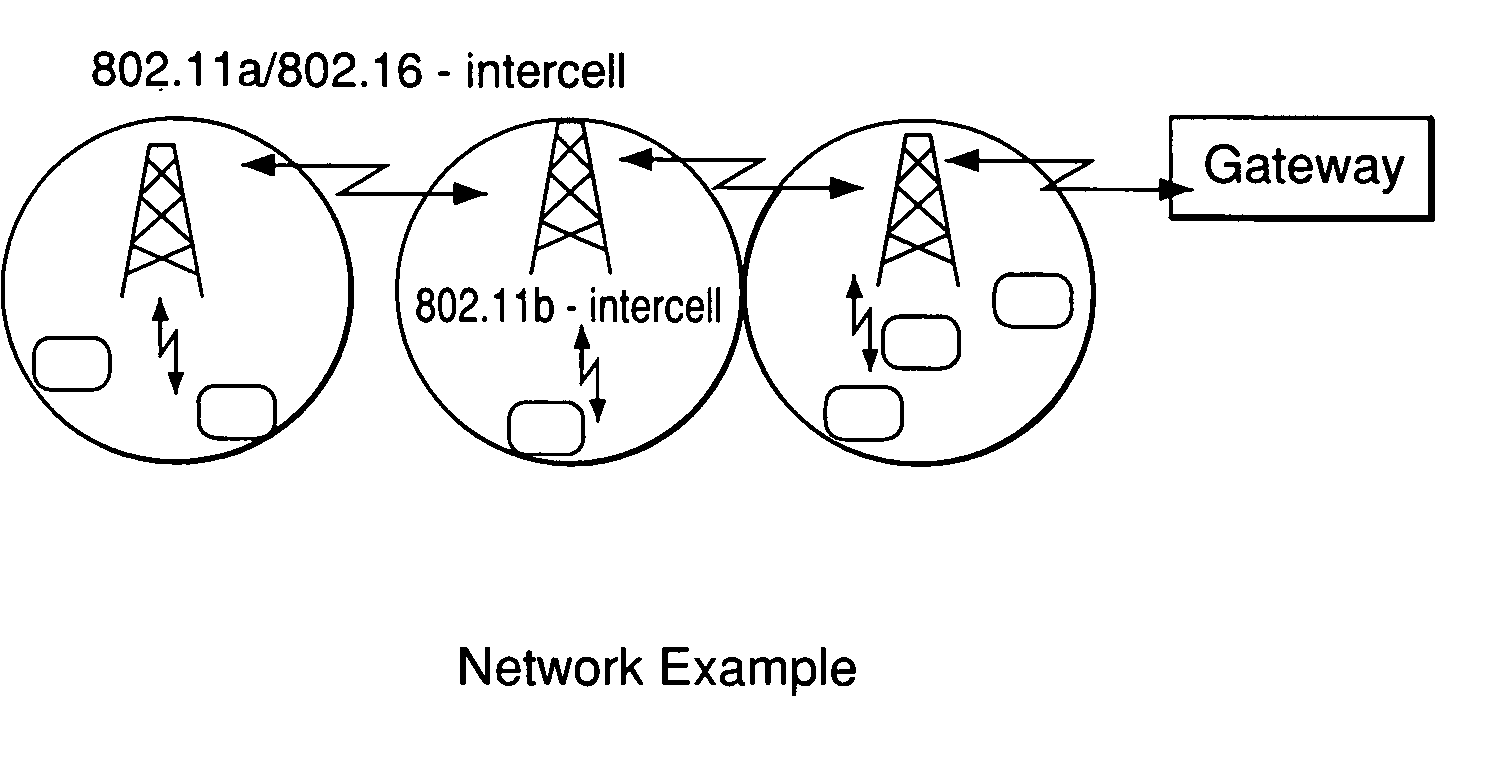Characterizing the capacity region in multi-channel, multi-radio mesh networks
a multi-channel, multi-radio technology, applied in data switching networks, instruments, frequency-division multiplexes, etc., can solve problems such as interference and collisions
- Summary
- Abstract
- Description
- Claims
- Application Information
AI Technical Summary
Benefits of technology
Problems solved by technology
Method used
Image
Examples
Embodiment Construction
[0034] A problem that has not previously been addressed in multi-channel, multi-radio networks is how to characterize the capacity region, i.e., the set of all feasible rate vectors, of the network for a given optimization objective. The present invention, in various embodiments, addresses the question of how to characterize the capacity region of a network for a given optimization objective. This capacity-planning question is addressed herein by developing algorithms to jointly optimize the routing, link-channel assignments, and scheduling for such networks, in order to obtain upper and lower bounds for the capacity region under a given objective function. In certain embodiments, a network model is proposed which captures the important practical aspects of, and characterizes the constraints binding the behavior of, systems involving multiple orthogonal channels and nodes that have the ability to communicate simultaneously with many neighbors using multiple radios over orthogonal ch...
PUM
 Login to View More
Login to View More Abstract
Description
Claims
Application Information
 Login to View More
Login to View More - R&D
- Intellectual Property
- Life Sciences
- Materials
- Tech Scout
- Unparalleled Data Quality
- Higher Quality Content
- 60% Fewer Hallucinations
Browse by: Latest US Patents, China's latest patents, Technical Efficacy Thesaurus, Application Domain, Technology Topic, Popular Technical Reports.
© 2025 PatSnap. All rights reserved.Legal|Privacy policy|Modern Slavery Act Transparency Statement|Sitemap|About US| Contact US: help@patsnap.com



